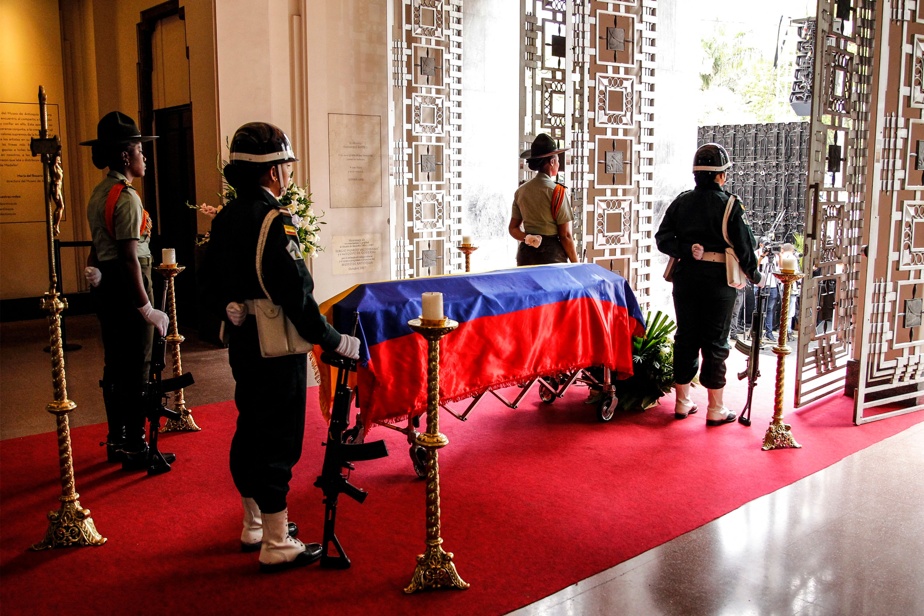(Medellín) Hundreds of people said goodbye to Fernando Botero on Tuesday in his hometown of Medellín, the last stop in the posthumous tributes paid to one of the most important Latin American artists of the 20th century.e century before his burial in Italy.
Arriving aboard a black hearse, the coffin was greeted by a line of soldiers in Botero Square, neighboring the Antioquia Museum which houses hundreds of paintings and sculptures donated by the artist to the city, noted the AFP.
Medellín thus begins three days of tributes to the memory of the artist before the burial of his ashes in Pietrasanta, alongside his wife, the Greek painter and sculptor Sophia Vari, who died in May.
“Botero forever,” cheered a woman in her sixties, dressed in black and draped in a Colombian flag, who was observing the event from behind a security barrier.
Hundreds of admirers applauded for a long time as the funeral procession headed towards the museum, where several speeches were given by the maestro’s friends, members of his family and beneficiaries of his donations or scholarships.
“I think the most precious thing my grandfather left us […] is the deep love of work and the importance of finding a vocation that gives meaning to life,” said his grandson, Felipe Botero.
“Diplomat of Colombian culture”

PHOTO JUAN BARRETO, AGENCE FRANCE-PRESSE
Arriving aboard a black hearse, the coffin was greeted by a line of soldiers in Botero Square, next to the Antioquia Museum which houses hundreds of paintings and sculptures donated by the artist to the city.
The famous master of the volume, one of the most sought-after artists of the last 40 years, died on September 15 at the age of 91 in Monaco following pneumonia. The body will remain at the Antioquia Museum Tuesday and Wednesday. On Thursday, after a ceremony at the Metropolitan Cathedral of Medellín, the artist’s remains will be cremated and the ashes transported to Italy.
Botero has been a major patron, with donations estimated at more than $200 million. He offered many of his works and dozens of paintings from his private collection to the museums of Medellín and Bogota, including Picasso, Monet, Renoir, Miro…
His numerous sculptures are also visible outdoors in several capitals around the world, the artist believing that exhibitions in public spaces are a “revolutionary rapprochement” of art with the public.
For one of the master’s sons, Juan Pablo Botero, writer and columnist, his father “created his own original universe […] populated by hundreds of characters, the vast majority of whom are inspired by his native land. Everything came out of this beautiful and suffering country that is Colombia, tortured by poverty and tormented by violence, which he loved with all his heart until the day he died.”
On Botero Square, which houses more than 20 bronze sculptures by the artist, dozens of onlookers took the opportunity to have their photos taken at the foot of the massive works.
“It’s like coming to pay back a gesture of gratitude for everything he has done for the city,” commented Juan Pablo Gongora, a 20-year-old student.
Between the 1980s and 1990s, Medellín was the epicenter of an urban war involving the powerful cartel of drug trafficker Pablo Escobar. In the 2000s, it was also the scene of a bloody episode of the internal conflict that tore the country apart for decades. A violence that marked Botero’s work.
For retired May Perez, Botero “was a diplomat of Colombian culture. He never stopped depicting customs, life, positive and negative things: war, peace, poverty, abundance.”
